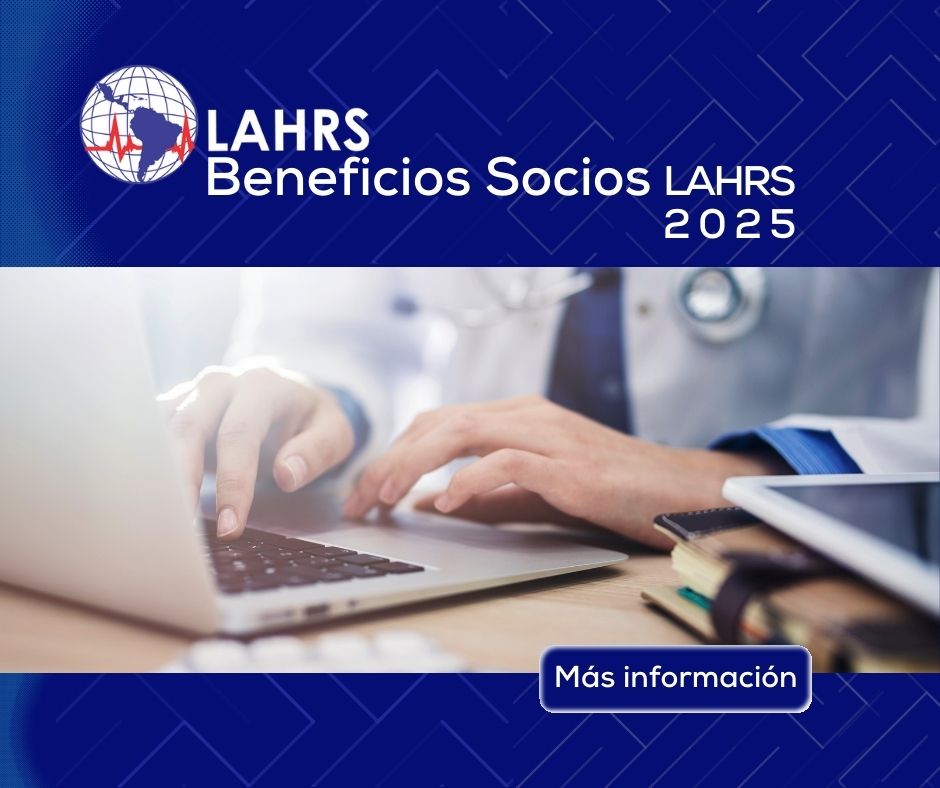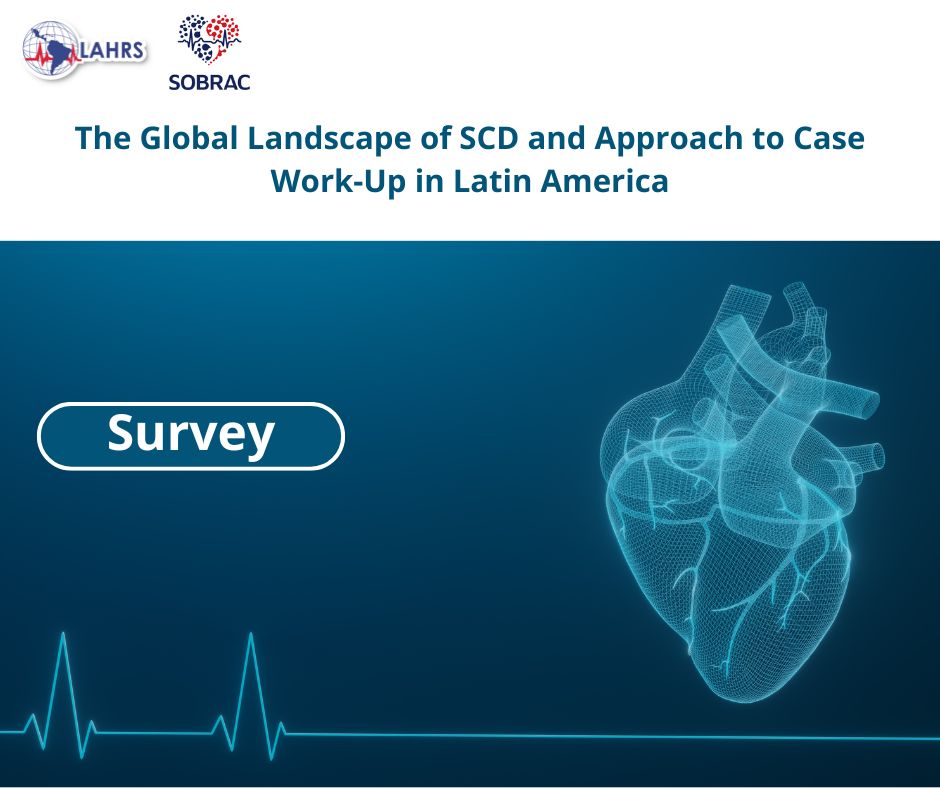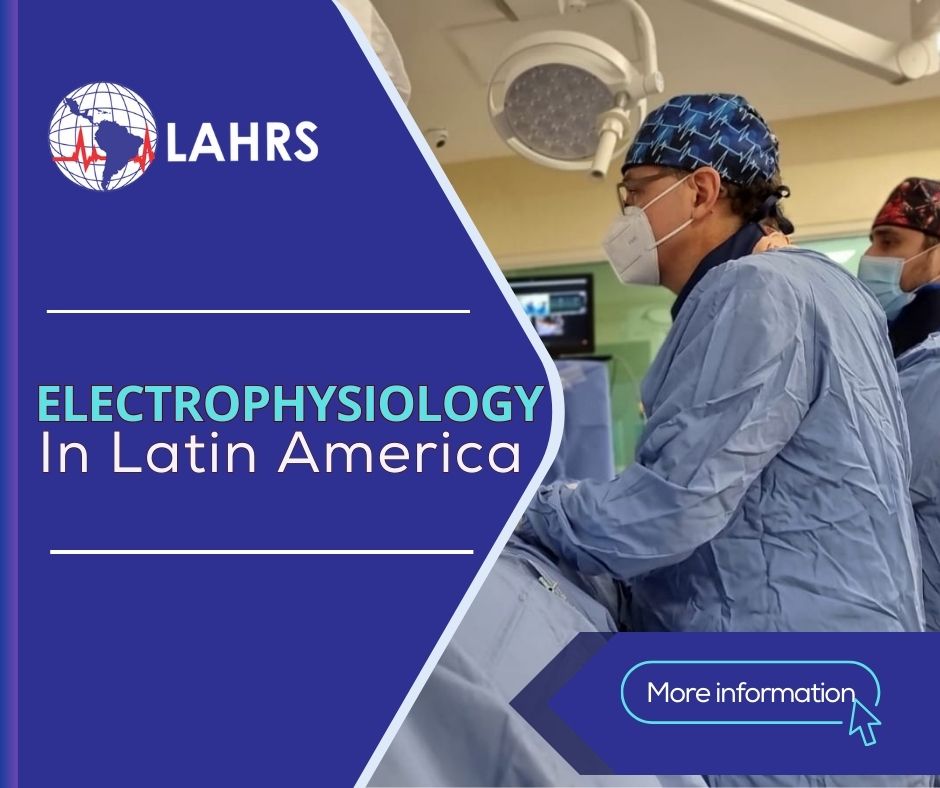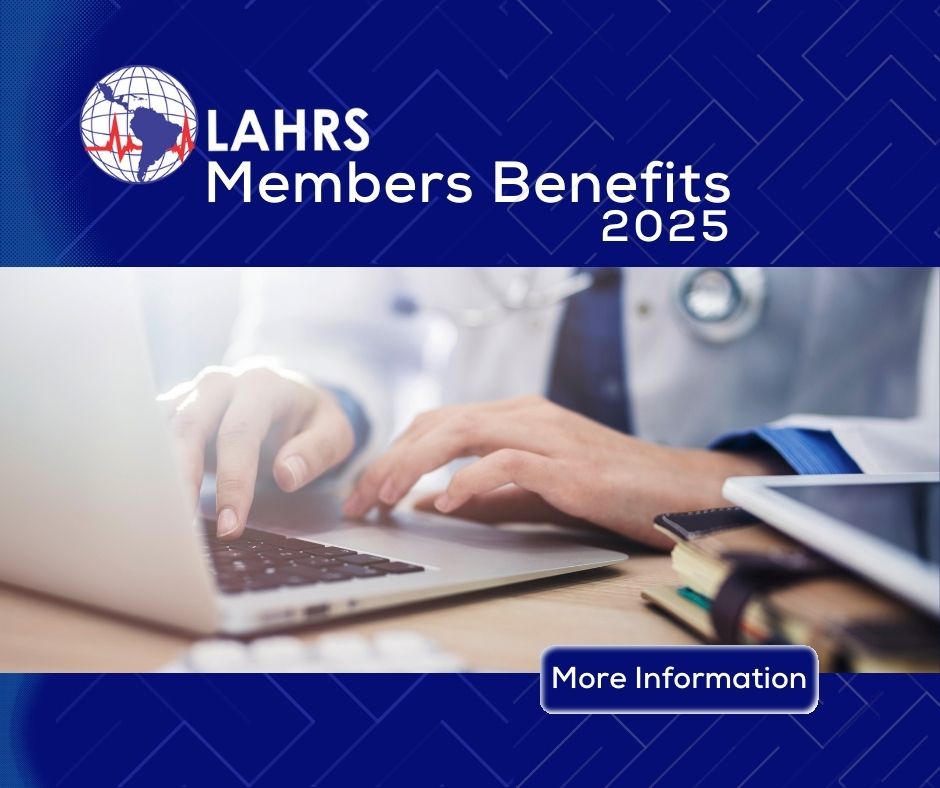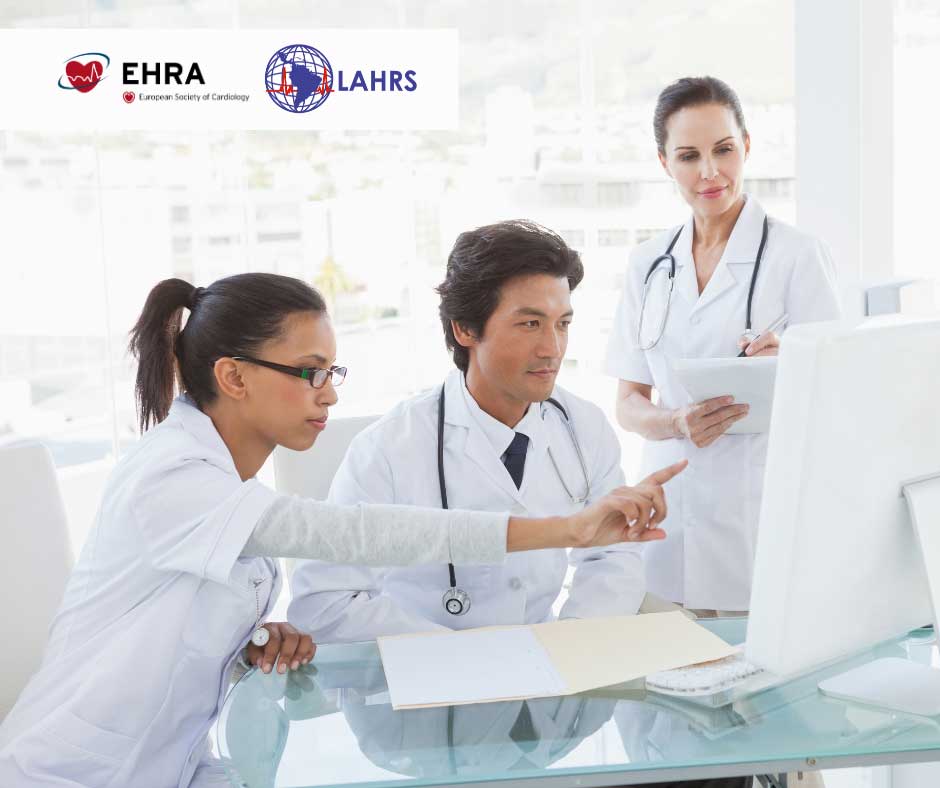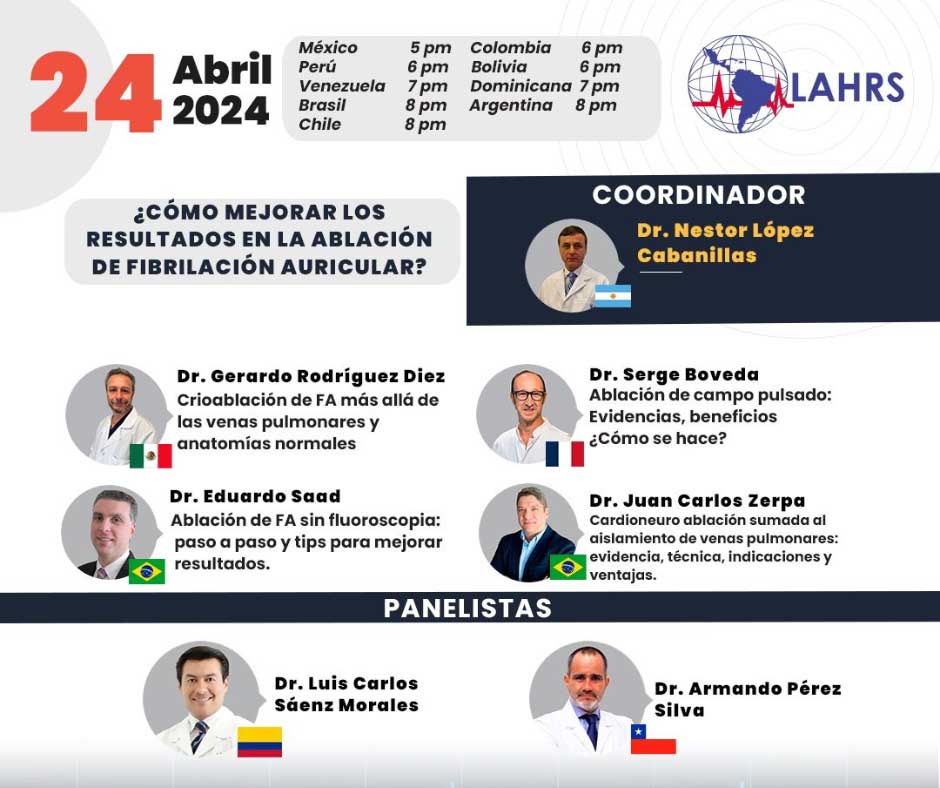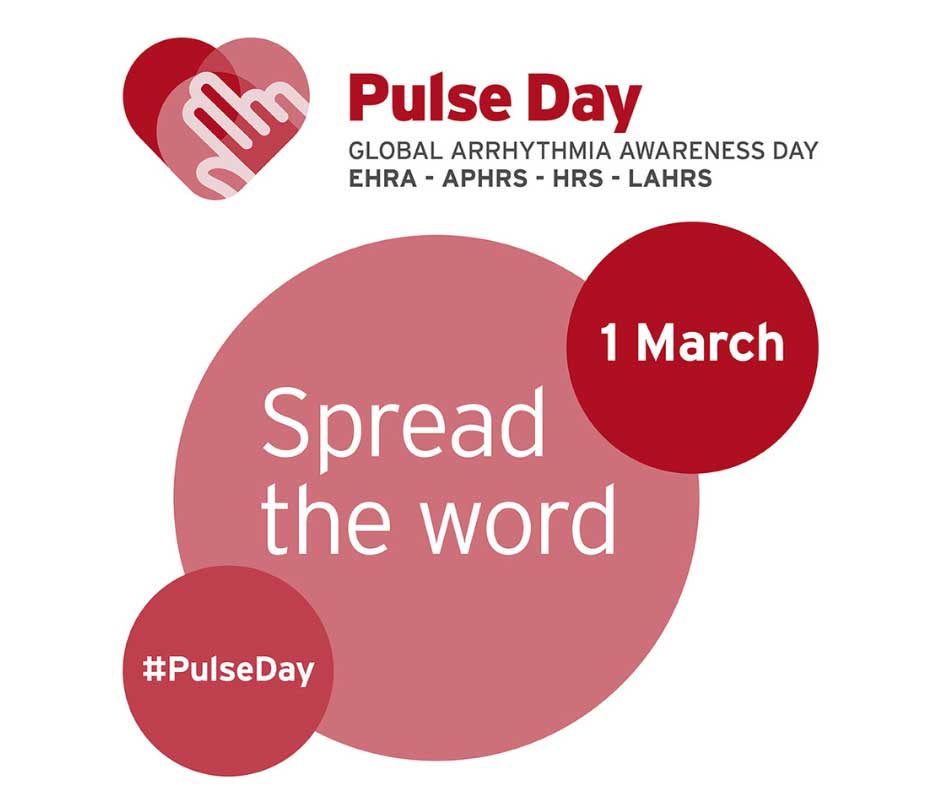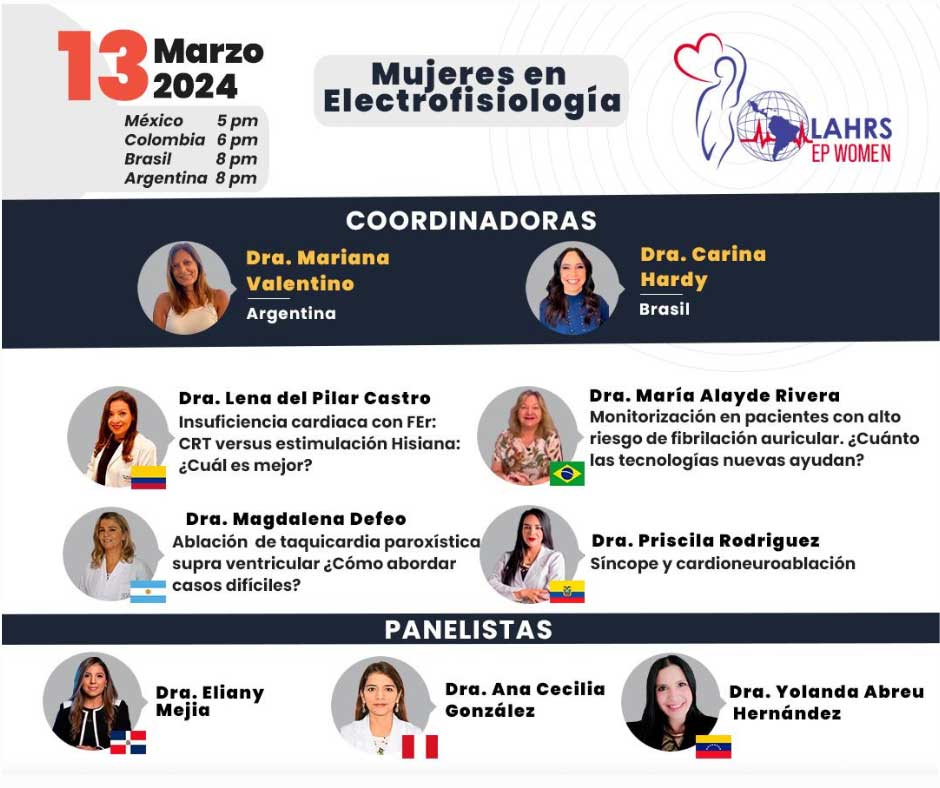The LAHRS Executive Committee invites members with current dues for 2024 and 2025 to join the society’s various scientific committees. To this end, a call is being made for new directors and members of the various scientific committees. Members can send their proposals for directors and members of the various committees, along with a plan […]
LAHRS Member Benefits
New exclusive benefits for members with a 2024 and 2025 paid membership: – Free access to JICE journal – Free registration to the LAHRS 2025 scientific session – Registration discounts or scholarships for onsite or online access to international conferences, by requesting them at secretaria@lahrs.org : HRS 2025 Congress 75% discount (ONSITE) EHRA 2025 Congress […]
SURVEY The global landscape of SCD and approach to case work-up in Latin America
On behalf of LAHRS / SOBRAC, we invite you to participate in a brief survey on sudden cardiac death (SCD) and its clinical approach across Latin America. Your insights will contribute to a better understanding of regional challenges, access to genetic testing, and strategies for improving patient care. • Survey duration: 6 to 10 minutes […]
Electrophysiology in Latin America
In 2015, LAHRS published the 1st Latin American Catheter Ablation Registry, this information was recently updated in the 2nd LATIN AMERICAN CATHETER ABLATION REGISTRY published in 2024, showing data on the technical and human resources used in these procedures and their characteristics and results in Latin America.
LAHRS Member Benefits
New exclusive benefits for members with a 2024 and 2025 paid membership
LAHRS Elections – 2024
In compliance with the present STATUTES and the LAHRS ELETORAL REGULATION, we inform you that on September 3rd, 2024, the election process of the EXECUTIVE COMMISSION 2025-2026 will begin: • PRESIDENT ELECT • SECRETARY ELECT • TREASURER ELECT • 3rd VOCAL/MEMBER • 4th VOCAL/MEMBER APPEARANCE OF LISTS OF CANDIDATES: from September 3rd. Deadline: October 15, […]
EHRA/LAHRS Cardiac Electrophysiology Certification Exam – 2024 Edition
The EHRA cardiac electrophysiology certification exam in collaboration with LAHRS, will be held again this year. Modality: Virtual Exam Date: September 20 Spanish Language Registration: 3 months prior to the exam LAHRS member benefit: 50% bonus on exam registration Contact: secretaria@lahrs.org More information
LAHRS Webinar – How to improve results in Atrial Fibrillation ablation?
The Latin American Heart Rhythm Society cordially invites you to its third webinar of the year 2024. We will have the participation of electrophysiologists leaders from all over America and Europe in this interesting topic of invasive electrophisiology It will take place on April 24 at 8 p.m. Argentina – Brazil, 5 p.m. Mexico and […]
Pulse day
Read more
LAHRS Webinar – Women in Electrophysiology
The Latin American Heart Rhythm Society cordially invites you to its second webinar of the year 2024 by the scientific council of our society “EP Women” We will have the participation of expert electrophysiologists from all over America to discuss gender differences in current electrophysiology. It will take place on March 13 at 8 p.m. […]

